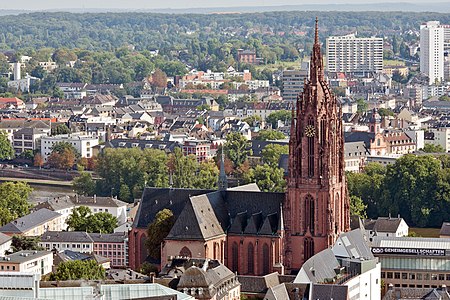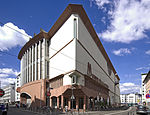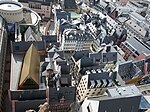Frankfurt Cathedral

Frankfurt Cathedral (German: Frankfurter Dom), officially Imperial Cathedral of Saint Bartholomew (German: Kaiserdom Sankt Bartholomäus) is a Roman Catholic Gothic church located in the centre of Frankfurt am Main, Germany. It is dedicated to Saint Bartholomew. It is the largest religious building in the city and a former collegiate church. Despite its common English name, it has never been a true cathedral (episcopal see), but is called the Kaiserdom (an "imperial great church" or imperial cathedral) or simply the Dom due to its importance as former election and coronation church of the Holy Roman Empire. As one of the major buildings of the Empire's history, it was a symbol of national unity, especially in the 19th century. The present church building is the third church on the same site. Since the late 19th century, excavations have revealed buildings that can be traced back to the 7th century. The history is closely linked with the general history of Frankfurt and Frankfurt's old town because the cathedral had an associated role as the religious counterpart of the Royal Palace in Frankfurt.
Excerpt from the Wikipedia article Frankfurt Cathedral (License: CC BY-SA 3.0, Authors, Images).Frankfurt Cathedral
Krautmarkt, Frankfurt Altstadt (Innenstadt 1)
Geographical coordinates (GPS) Address Nearby Places Show on map
Geographical coordinates (GPS)
| Latitude | Longitude |
|---|---|
| N 50.110555555556 ° | E 8.685 ° |
Address
A MODEL FOR A MONUMENT FOR MR. AND MS. HEINRICH DEICHMANN
Krautmarkt
60311 Frankfurt, Altstadt (Innenstadt 1, Innenstadt)
Hesse, Germany
Open on Google Maps










